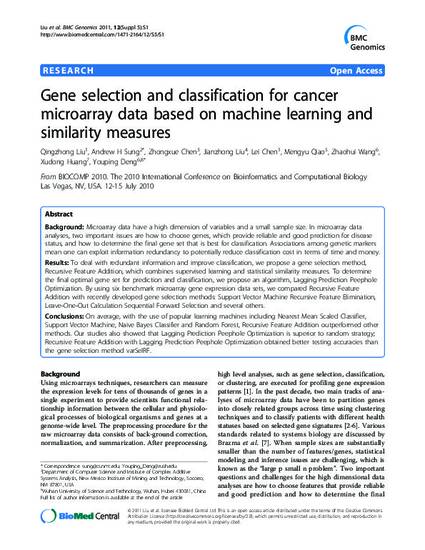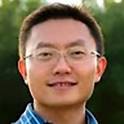
Article
Gene Selection and Classification for Cancer Microarray Data Based on Machine Learning and Similarity Measures
BMC Genomics
(2011)
Abstract
Background: Microarray data have a high dimension of variables and a small sample size. In microarray data analyses, two important issues are how to choose genes, which provide reliable and good prediction for disease status, and how to determine the final gene set that is best for classification. Associations among genetic markers mean one can exploit information redundancy to potentially reduce classification cost in terms of time and money.
Results: To deal with redundant information and improve classification, we propose a gene selection method, Recursive Feature Addition, which combines supervised learning and statistical similarity measures. To determine the final optimal gene set for prediction and classification, we propose an algorithm, Lagging Prediction Peephole Optimization. By using six benchmark microarray gene expression data sets, we compared Recursive Feature Addition with recently developed gene selection methods: Support Vector Machine Recursive Feature Elimination, Leave-One-Out Calculation Sequential Forward Selection and several others.
Conclusions: On average, with the use of popular learning machines including Nearest Mean Scaled Classifier, Support Vector Machine, Naive Bayes Classifier and Random Forest, Recursive Feature Addition outperformed other methods. Our studies also showed that Lagging Prediction Peephole Optimization is superior to random strategy; Recursive Feature Addition with Lagging Prediction Peephole Optimization obtained better testing accuracies than the gene selection method varSelRF.
Keywords
- gene selection,
- microarray,
- classification,
- supervised learning,
- similarity
Disciplines
Publication Date
December 23, 2011
DOI
10.1186/1471-2164-12-S5-S1
Publisher Statement
© Liu et al. licensee BioMed Central Ltd 2011. This is an open access article distributed under the terms of the Creative Commons Attribution License (http://creativecommons.org/licenses/by/2.0), which permits unrestricted use, distribution, and reproduction in any medium, provided the original work is properly cited. Article retrieved from BMC Genomics.
Citation Information
Qingzhong Liu, Andrew H. Sung, Zhongxue Chen, Jianzhong Liu, et al.. "Gene Selection and Classification for Cancer Microarray Data Based on Machine Learning and Similarity Measures" BMC Genomics Vol. 12 Iss. S5 (2011) p. S1 ISSN: 1471-2164 Available at: http://works.bepress.com/lei-chen/32/
